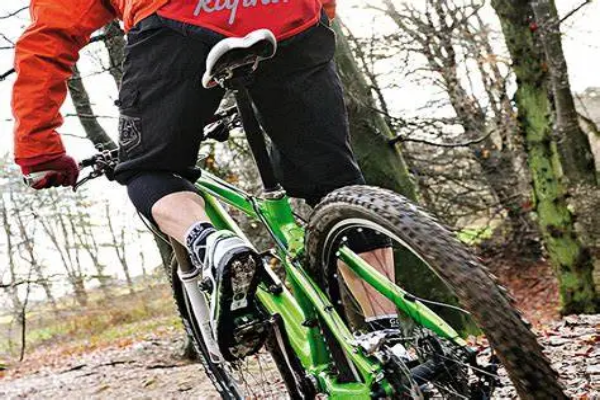Mountain biking is a thrilling and challenging sport that combines physical fitness, technical skill, and a love of the outdoors. One crucial aspect of mountain biking that often gets overlooked is the proper bike seat height. The height of your bike seat can significantly affect your comfort, efficiency, and performance on the trails. In this article, we will delve into the importance of bike seat height, how to measure and adjust it, and tips for optimizing your mountain biking experience.
Why Bike Seat Height Matters
The height of your bike seat, also known as saddle height, plays a vital role in your biking experience. A correctly adjusted seat height can:
- Enhance Efficiency: A proper seat height allows for maximum power transfer from your legs to the pedals.
- Improve Comfort: It helps to reduce strain on your knees and lower back.
- Prevent Injury: Incorrect seat height can lead to overuse injuries, particularly in the knees.
- Optimize Control: Proper seat height contributes to better bike handling and stability.
Factors to Consider When Setting Bike Seat Height
Several factors influence the ideal bike seat height for mountain biking:
- Rider’s Height and Leg Length: These are the primary determinants of the correct saddle height.
- Type of Bike: Mountain bikes often require different settings compared to road bikes due to varying riding positions and terrains.
- Riding Style: Aggressive downhill riding might require a different seat height compared to cross-country riding.
- Personal Preference: Comfort levels can vary, and some riders might prefer slight adjustments.
Measuring Your Inseam
Before adjusting your bike seat, you need to measure your inseam. Here’s how to do it:
- Stand Barefoot Against a Wall: Ensure your feet are about 6 inches apart.
- Use a Book or Similar Object: Place it between your legs, pressing it up against your crotch to simulate the saddle.
- Measure from the Floor to the Top of the Book: This measurement is your inseam length.
See Also: Is Mountaineering a Sport
Calculating the Ideal Seat Height
Several methods can help you calculate your ideal seat height. Here are the most common ones:
1. The Lemond Method
Greg Lemond, a famous cyclist, popularized this method. It’s simple and effective:
- Multiply Your Inseam by 0.883: This will give you the distance from the bottom bracket to the top of the saddle.
- Adjust Accordingly: This is a good starting point. Fine-tune as necessary.
2. The Holmes Method
This method focuses on knee angle:
- Sit on Your Bike with the Pedals Level: One foot at the bottom of the pedal stroke.
- Measure the Knee Angle: It should be between 25 to 35 degrees.
- Adjust the Saddle Height: To achieve this knee angle, raise or lower the saddle as needed.
Adjusting Your Bike Seat Height
Once you have an idea of the ideal height, follow these steps to adjust your seat:
- Loosen the Seat Clamp: Use a wrench or Allen key to loosen the bolt.
- Adjust the Height: Raise or lower the seat post to the desired height.
- Tighten the Clamp: Ensure the seat is secure and doesn’t move.
Fine-Tuning Your Bike Seat Height
After adjusting, take your bike for a test ride. Pay attention to how it feels and make small adjustments if necessary. Here are some tips for fine-tuning:
- Check for Knee Pain: If you experience pain, your seat might be too high or too low.
- Evaluate Your Pedal Stroke: Your legs should be almost fully extended at the bottom of the stroke, with a slight bend in the knee.
- Consider Saddle Tilt and Fore-Aft Position: These can also affect comfort and performance.
Additional Tips for Mountain Biking Seat Height
- Dropper Posts: Consider using a dropper post, which allows you to adjust the seat height on the fly. This is especially useful for technical descents.
- Terrain Adaptation: For steep climbs, a slightly higher seat might be beneficial. For descents, a lower seat provides better control.
- Regular Check-Ups: Periodically check your seat height, as factors like shoe wear and saddle compression can affect it over time.
Common Mistakes to Avoid
- Ignoring the Importance of Seat Height: Many riders overlook this aspect, leading to discomfort and inefficiency.
- Not Re-Evaluating Over Time: As your riding style and physical condition change, so might your ideal seat height.
- Focusing Only on Height: Remember that saddle tilt and fore-aft position are also crucial.
Conclusion
Proper bike seat height is essential for a comfortable and efficient mountain biking experience. By taking the time to measure, adjust, and fine-tune your seat height, you can enhance your performance, prevent injuries, and enjoy your rides to the fullest. Remember, it’s all about finding the balance that works best for you, so don’t be afraid to make adjustments as needed. Happy riding!

